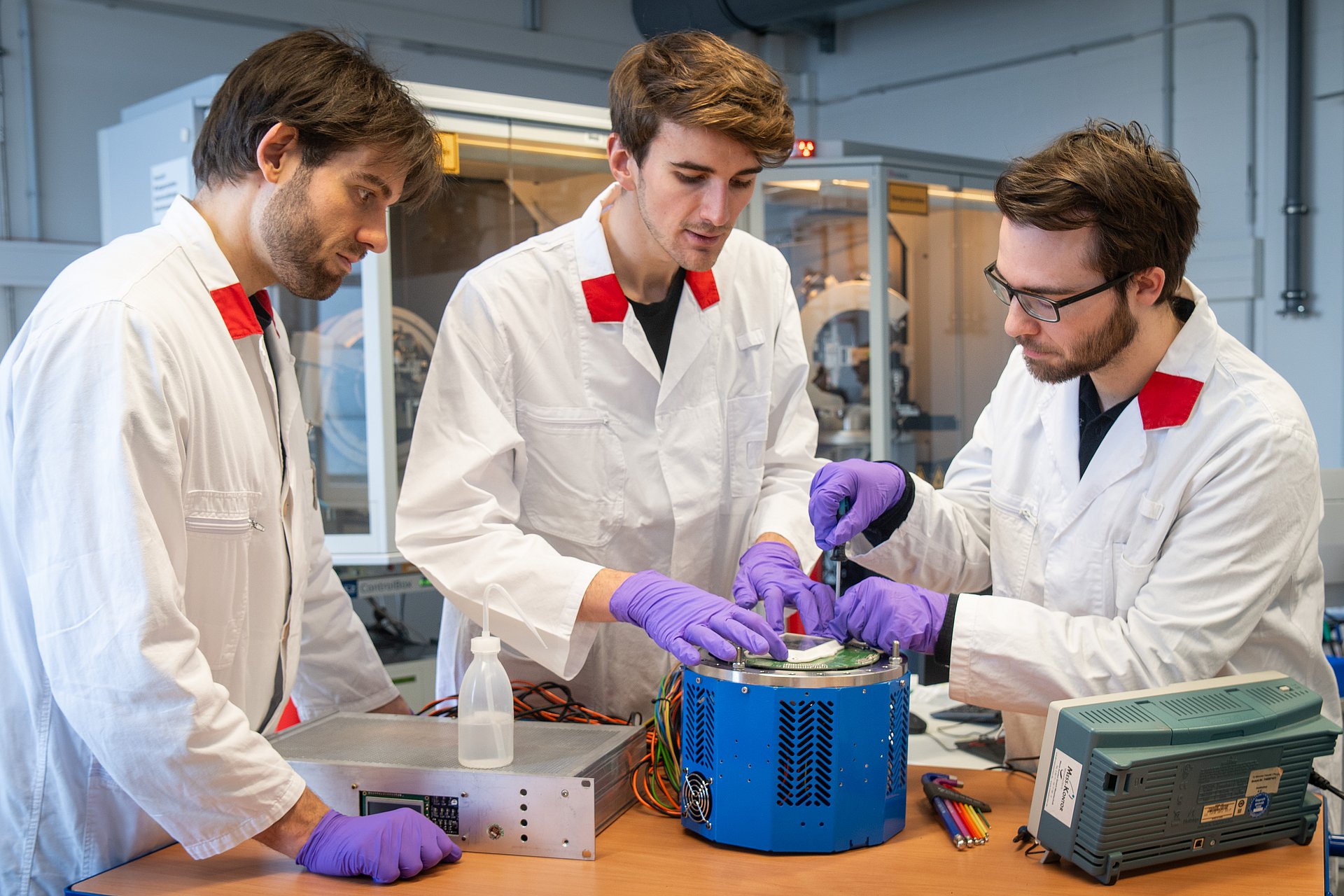We reach more than 65,000 registered users in Dec!! Register Now

Photo sensor from smartphones helps with antimatter research at CERN
- May 02, 2025
- 6 Views
- 0 Likes
- 0 Comment
At CERN, scientists from the AEgIS collaboration led by a team of the Technical University of Munich (TUM) have repurposed smartphone camera sensors to create a detector capable of tracking antiproton annihilations in real time with unprecedented resolution. This new device, described in a paper just published in Science Advances, can pinpoint antiproton annihilations with a resolution of about 0.6 micrometres, a 35-fold improvement over previous real-time methods.
Scientists working together in the “Antihydrogen Experiment: Gravity, Interferometry, Spectroscopy” (AEgIS) and other experiments at CERN’s Antimatter Factory, such ALPHA and GBAR, are on a mission to measure the free-fall of antihydrogen under Earth's gravity with high precision, each using a different technique. AEgIS’s approach involves producing a horizontal beam of antihydrogen and measuring its vertical displacement using a device called a moiré deflectometer that reveals tiny deviations in motion and a detector that records the antihydrogen annihilation points.“For AEgIS to work, we need a detector with incredibly high spatial resolution, and mobile camera sensors have pixels smaller than 1 micrometer,” says Francesco Guatieri from the research neutron source FRM II at TUM and Principal Investigator of the research. “We have integrated 60 of them in the single photographic detector, the Optical Photon and Antimatter Imager (OPHANIM), with the highest number of pixels currently operational: 3840 MPixels. Previously, photographic plates were the only option, but they lacked real-time capabilities. Our solution, demonstrated for antiprotons and directly applicable to antihydrogen, combines photographic-plate-level resolution, real-time diagnostics, self-calibration and a good particle collection surface, all in one device.” Andreas Heddergott / TUM
Andreas Heddergott / TUM
Converted image sensors
Specifically, the researchers used optical image sensors that had previously been shown to be capable of imaging low-energy positrons in real time with unprecedented resolution. “We had to strip away the first layers of the sensors, which are made to deal with the advanced integrated electronics of mobile phones,” says Guatieri. “This required high-level electronic design and micro-engineering.” Master's students Michael Berghold and Markus Münster at the TUM School of Engineering and Design played a key role in the project.Extraordinary resolution
“This is a game-changing technology for the observation of the tiny shifts due to gravity in an antihydrogen beam travelling horizontally, and it can also find broader applications in experiments where high position resolution is crucial, or to develop high-resolution trackers,” says AEgIS spokesperson Dr. Ruggero Caravita. “This extraordinary resolution enables us also to distinguish between different annihilation fragments, paving the way for new research on low-energy antiparticle annihilation in materials,” concludes Caravita.List of Referenes
- Michael Berghold, Davide Orsucci, Francesco Guatieri, Sara Alfaro, Marcis Auzins, Benedikt Bergmann, Petr Burian, Roberto Sennen Brusa, Antoine Camper, Ruggero Caravita, Fabrizio Castelli, Giovanni Cerchiari, Roman Jerzy Ciuryło, Ahmad Chehaimi, Giovanni Consolati, Michael Doser, Kamil Eliaszuk, Riley Craig Ferguson, Matthias Germann, Anna Giszczak, Lisa Glöggler, Łukasz Graczykowski, Malgorzata Grosbart, Natali Gusakova, Fredrik Gustafsson, Stefan Haider, Saiva Huck, Christoph Hugenschmidt, Malgorzata Anna Janik, Tymoteusz Henryk Januszek, Grzegorz Kasprowicz, Kamila Kempny, Ghanshyambhai Khatri, Łukasz Kłosowski, Georgy Kornakov, Valts Krumins, Lidia Lappo, Adam Linek, Sebastiano Mariazzi, Pawel Moskal, Dorota Nowicka, Piyush Pandey, Daniel PĘcak, Luca Penasa, Vojtech Petracek, Mariusz Piwiński, Stanislav Pospisil, Luca Povolo, Francesco Prelz, Sadiqali Rangwala, Tassilo Rauschendorfer, Bharat Rawat, Benjamin Rienäcker, Volodymyr Rodin, Ole Røhne, Heidi Sandaker, Sushil Sharma, Petr Smolyanskiy, Tomasz Sowiński, Dariusz Tefelski, Theodoros Vafeiadis, Marco Volponi, Carsten Peter Welsch, Michal Zawada, Jakub Zielinski, Nicola Zurlo. Real-time antiproton annihilation vertexing with submicrometer resolution. Science Advances, 2025; 11 (14) DOI: 10.1126/sciadv.ads1176
Cite This Article as
No tags found for this post









